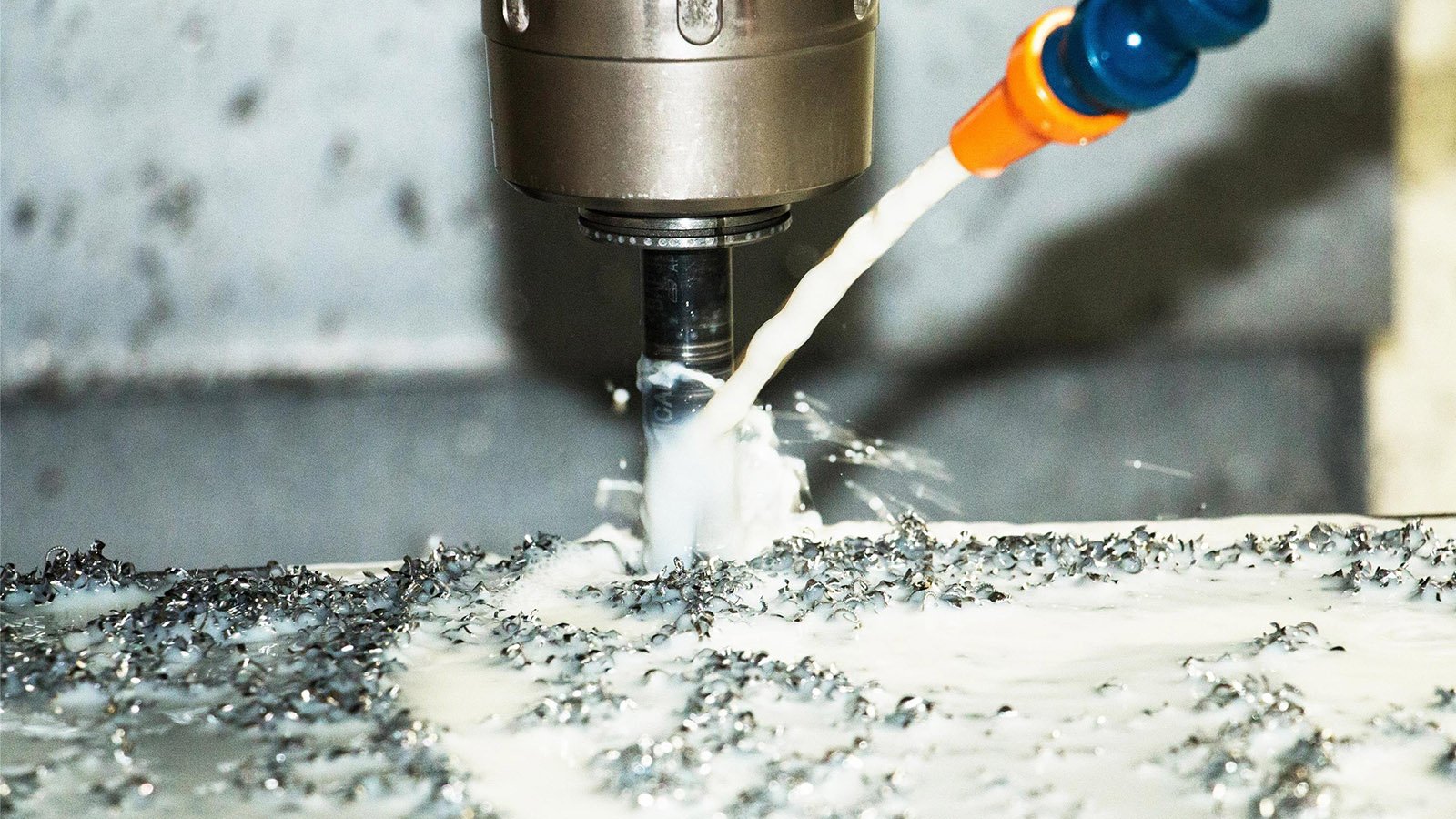What is CNC cutting fluid and the Functions of Cutting Fluid During CNC Machining
CNC machining is a subtractive manufacturing technology where a cutting tool attached to a spinning spindle removes material from the workpiece, in order to accomplish the required machining operation.
When the material comes into close touch with the high-speed spinning spindle, a lot of heat is produced around the cutting area.
This is where the cutting fluid is used in this situation. For a machining process to run smoothly and effectively, the cutting fluid supplies the lubrication and heat dissipation that are required.
What Is a Cutting Fluid?
Cutting fluid is an industrial liquid that is used to cool and lubricate the metal being cut as well as the cutting tools during metal cutting processes like CNC machining. This liquid is also known by the names cutting compound, coolant, lubricant, and cutting oil.
Cutting fluid is usually manufactured using petroleum distillates, animal fats, plant oils, water, air, or other essential ingredients. It is composed of some extremely helpful ingredients that have been scientifically blended to maximize their mutually beneficial effects.
Compared to saponified oils, reducing fluid is far more effective at cooling, and it does not have the same problems as traditional soap-based emulsions that may stink in the summer or dilute in the winter.
Cutting fluid is harmless, it has no irritating odor, it won’t harm people or machinery, doesn't contribute to air pollution, and does not damage the paint on lathes. Furthermore, ferrous steels can be cut and ground with cutting fluid.
Functions Of Cutting Fluid During CNC Machining:
Cooling
During metal machining processes, due to the friction between the cutting tool and the surface of the workpiece, heat is generated in the workpiece, chips, and cutting tool. Numerous negative consequences of this heat include thermal expansion, chemical reactions including oxidation, surface welding, and many more. The temperature of the cutting fluid can reach as high as 600–1000 degrees Celsius, which can lower the heat generated during the cutting process. By keeping the tool and the workpiece cool, a cutting fluid helps to avoid these effects.
This is especially true for workpieces made of materials with low heat conductivity, such as stainless steel.
Lubrication
Cutting fluid can leave an oil film on the surface of workpieces and tools. This film helps lower the amount of friction between the metals by penetrating even the smallest metal gaps and irregular areas. It can lengthen the tool's lifespan and decrease wear. Additionally, cutting fluid can lessen resistance to cutting and lower the power required for machining.
Prevention of corrosion
Cutting fluids contains rust and corrosion inhibitors that can prevent the corrosion of the machine parts and the machined surface. Cutting fluids with mineral oils stops oxidation by covering exposed surfaces with a very thin layer of protection.
Lengthen the tool's lifespan
Utilizing cutting fluid to lower the temperature, reduce abrasion, and prevent corrosion and rust, minimizes the tool wear and prolongs the service life of the tool.
Cleaning
Utilizing cutting fluid, the chips created during the cutting process can be washed away, and the workpiece can be cleaned when the cutting fluid is sprayed on it.
Enhancement of surface finish
By preventing thermal expansion and property changes in a workpiece, cutting fluids contributes to a good surface finish of machined parts.
Qualities of an excellent cutting fluid
Some characteristics of an excellent cutting fluid are as follows:
High thermal conductivity
The ability of a material to conduct heat is measured by its thermal conductivity. In the case of cutting fluid, how well it can conduct heat away from the workpiece and the tool.
High heat capacity
The more heat that cutting fluid can absorb before becoming hot or boiling, the higher its heat capacity.
Low viscosity
A cutting fluid's low viscosity facilitates easy flow. It also stops chips from blending with the liquid and forming sludge.
Non-corrosive
A good cutting fluid shouldn't damage the tool or workpiece.
Corrosion and oxidation-resistant
A good cutting fluid must not only be non-corrosive but also shield components from oxidation and corrosion.
Not harmful
A good cutting fluid should not be toxic to humans or the environment, as it will likely come into contact with both.
Chemically nonreactive
Cutting fluids aren't supposed to react chemically with the surfaces they come into touch with. This deteriorates the fluid in addition to harming these surfaces.
Odorless
An effective cutting fluid should have no smell to prevent any residual odors from bothering the machine or the machined part.
Sufficiently clear (transparent)
A good cutting fluid should not obstruct the view of the workpiece; it should be sufficiently clear.
Stability
A good cutting fluid should not deteriorate easily when used or stored.



